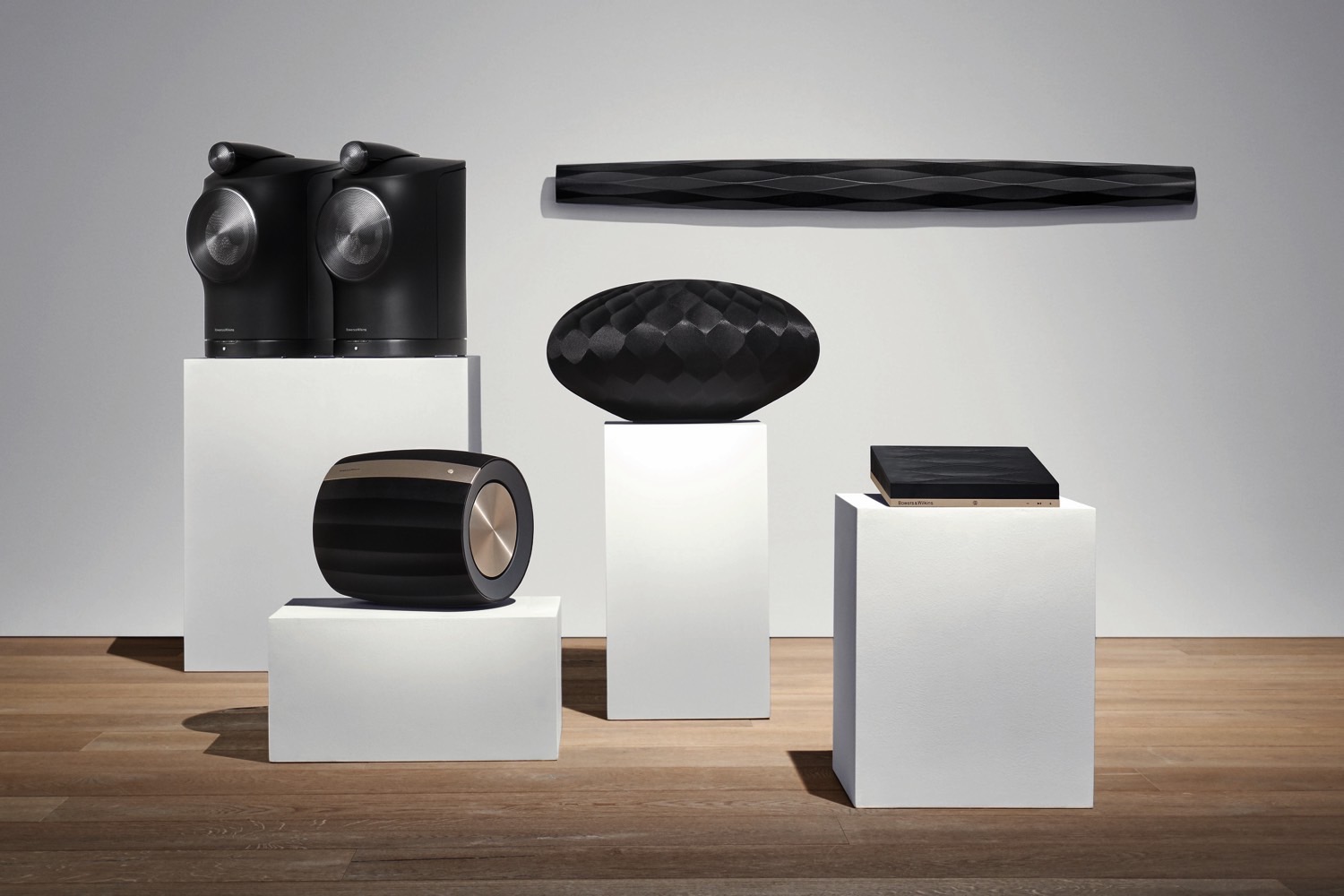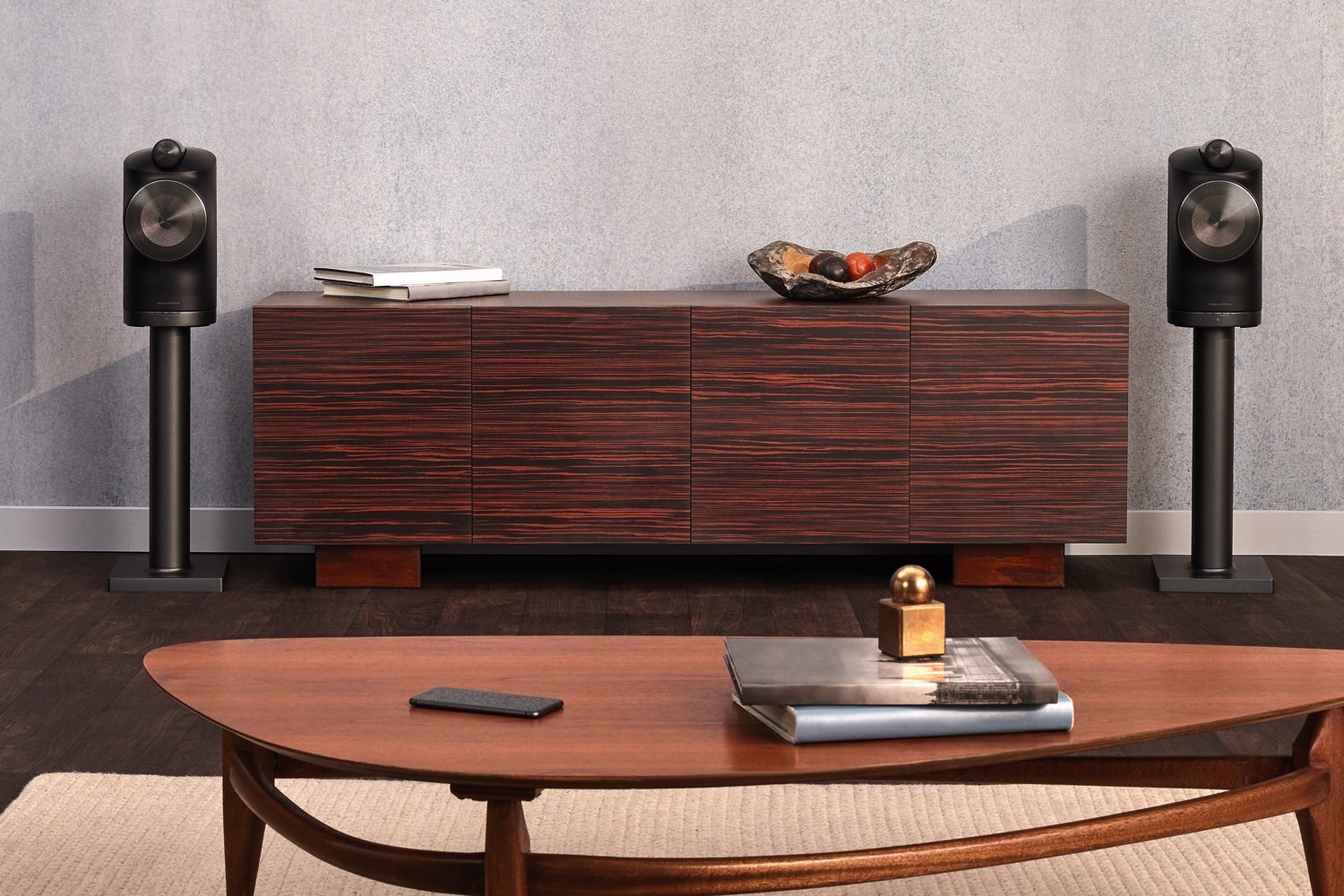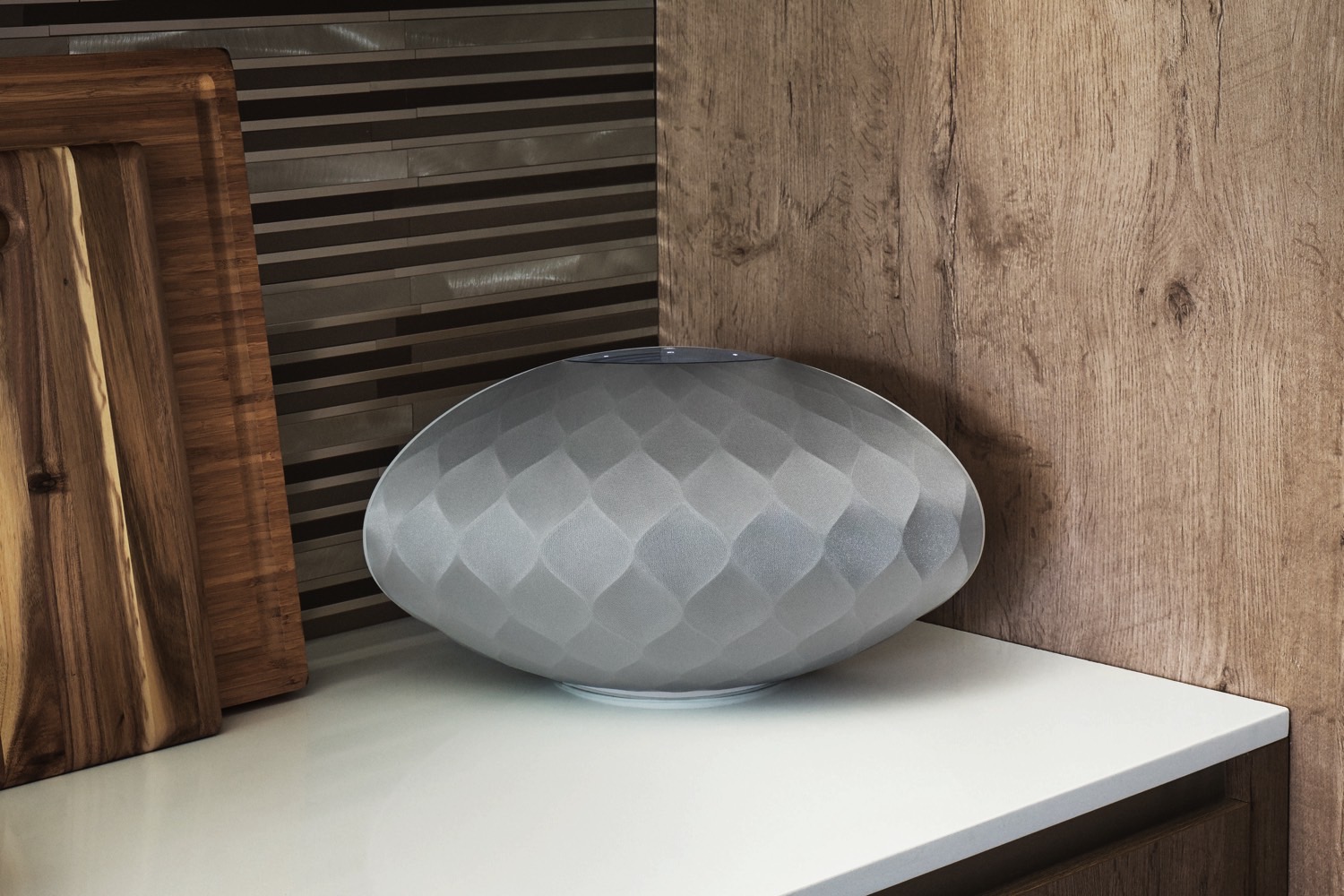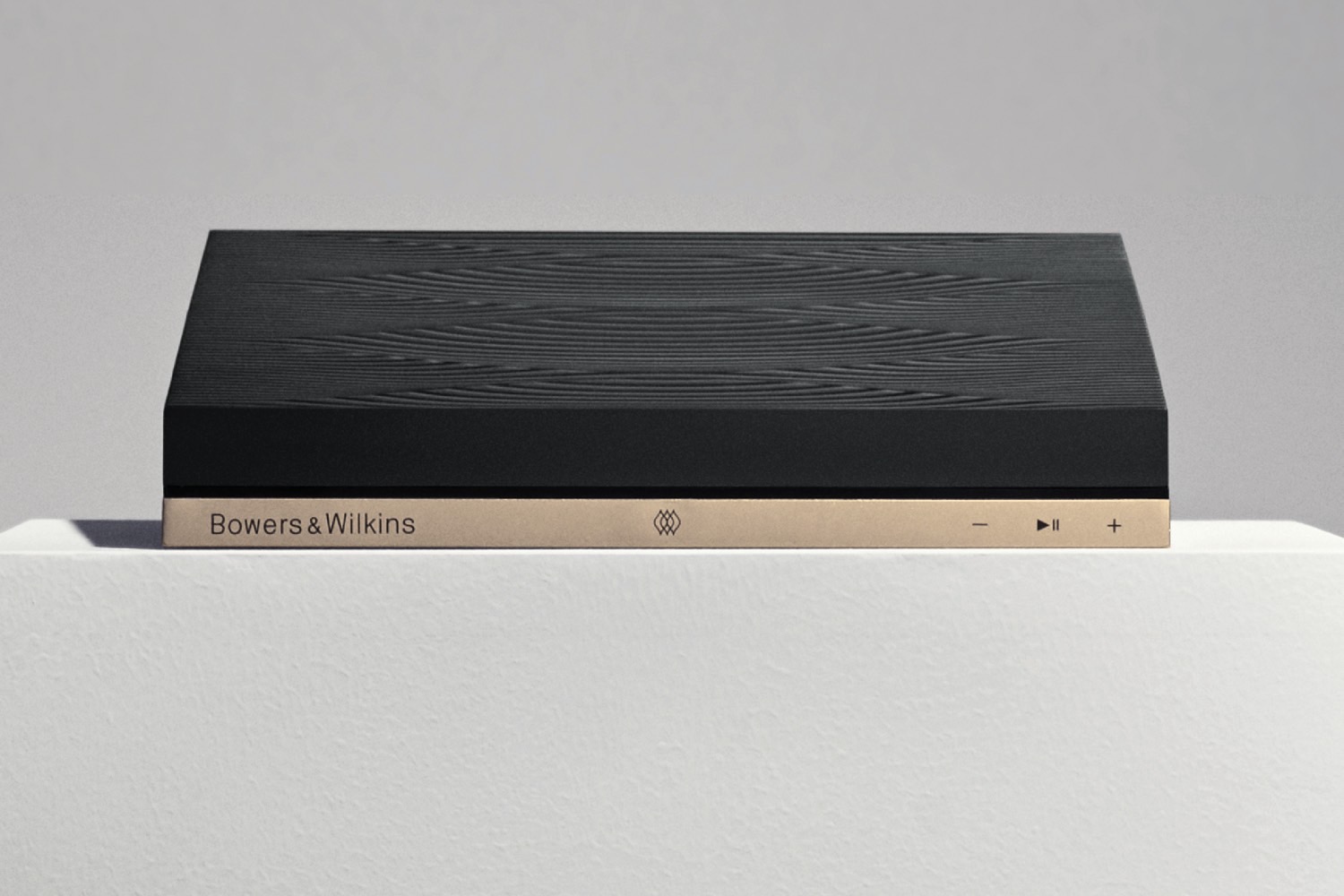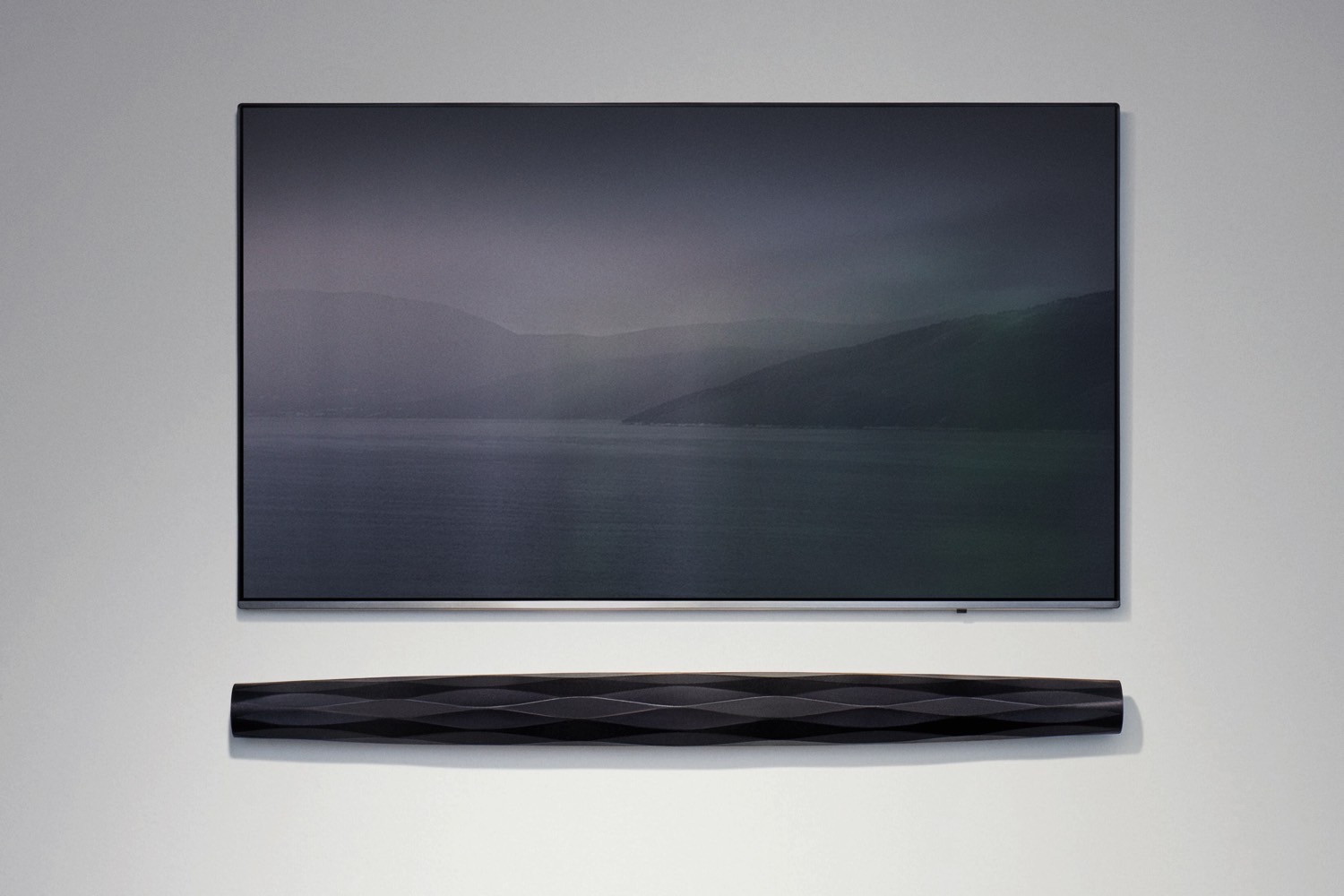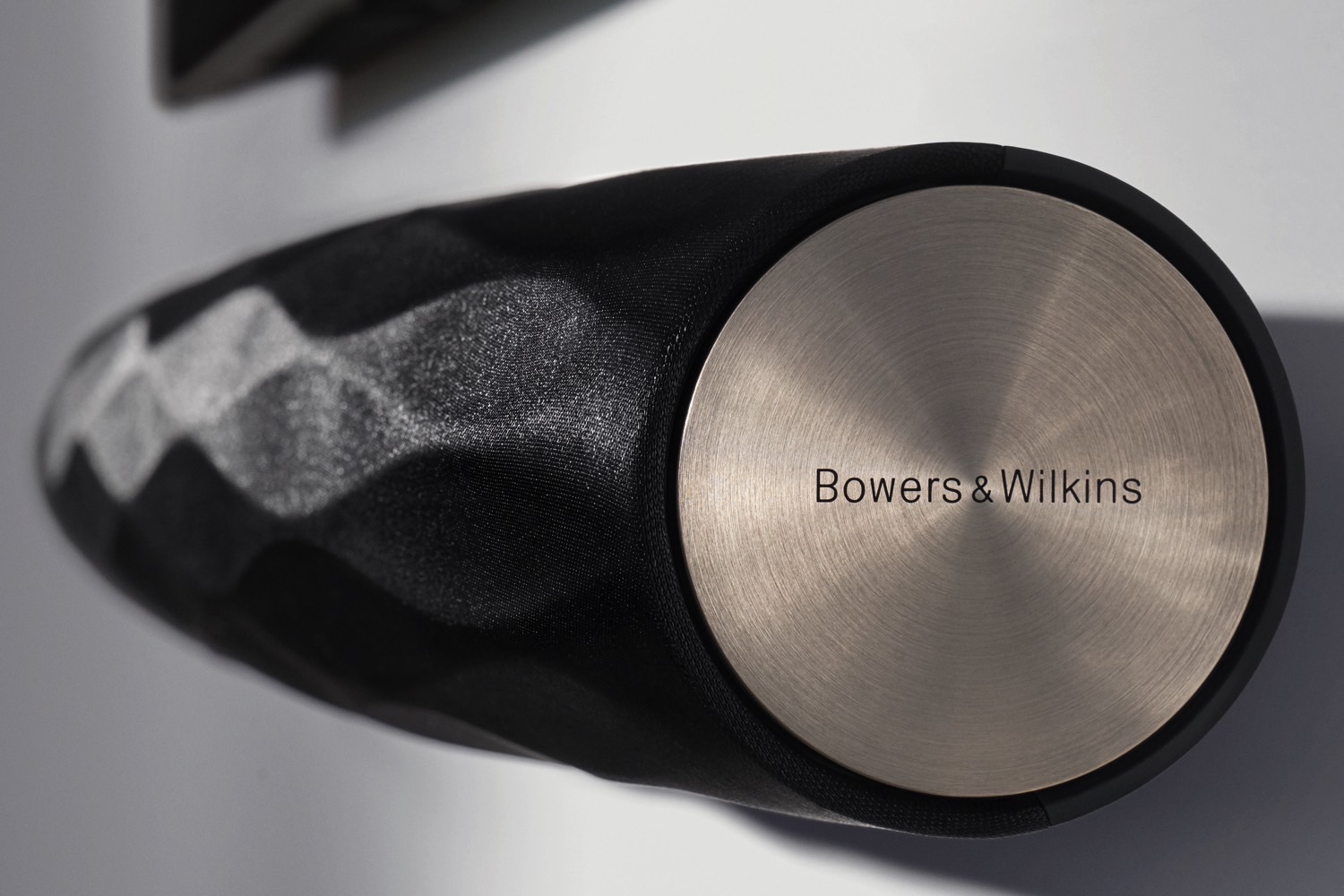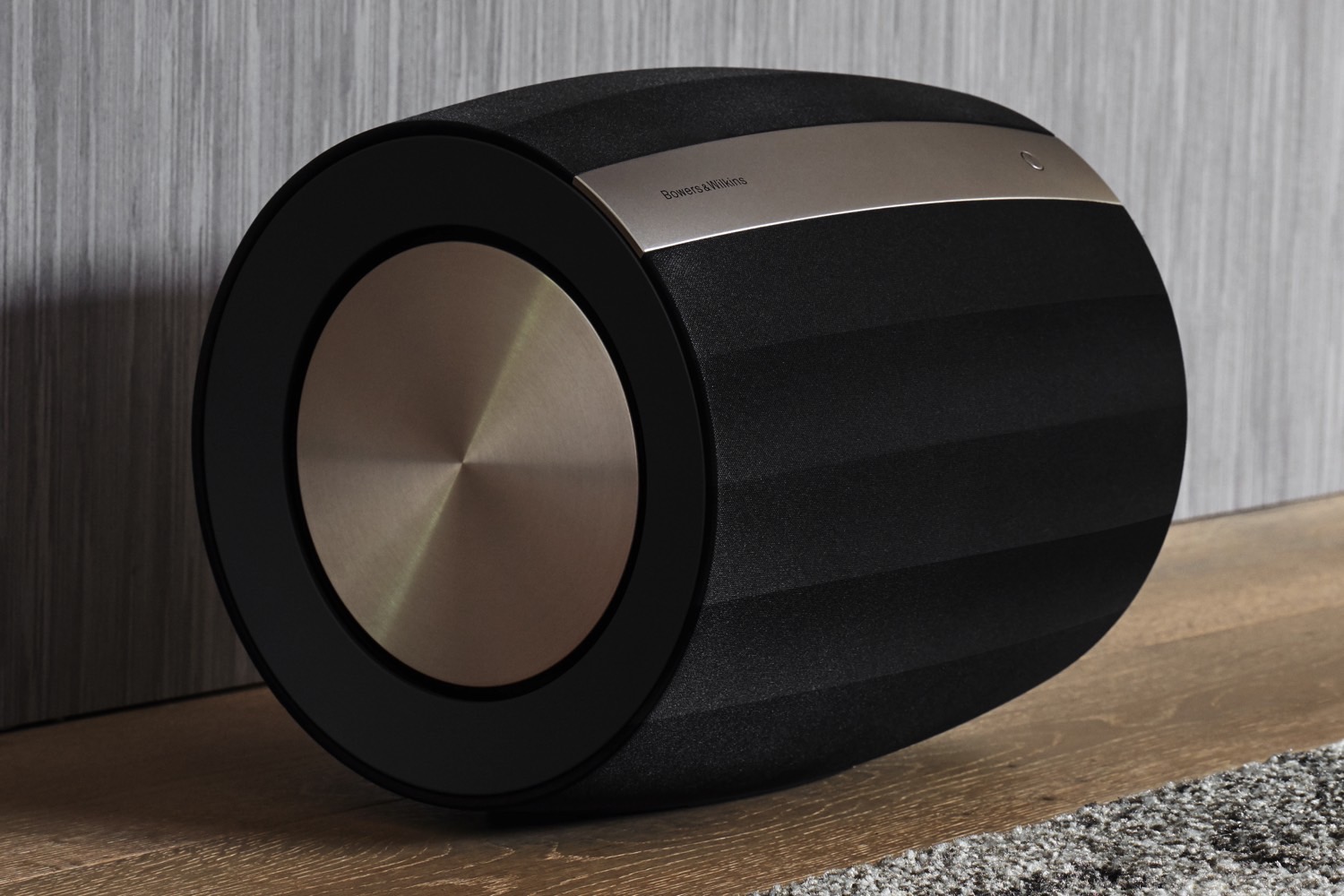When it comes to wireless home audio, there’s Sonos, and then there’s everyone else. Now, that growing list of competitors includes Bowers & Wilkins, which has just announced its Formation Suite, a group of wireless home audio products that is clearly aimed at buyers who desire a higher level of design, and audiophile-grade performance in a wireless audio system — and who won’t be fazed by the higher prices B&W is asking for the experience.
Running a patented mesh network, B&W claims the Formation Suite is capable of delivering perfectly synchronized sound, with one microsecond of delay between its flagship Formation Duo speakers, and milliseconds between all Formation components. The system is also capable of handling lossless high-resolution audio formats at up to 96/24 bit resolution. Rounding out its high-end specs, all components have Ethernet, AirPlay 2, and Bluetooth 4.1, with AptX HD support, and a USB port for system updates. The Formation Suite is compatible with Spotify Connect, and Roon.
Like Sonos, The system will be controlled by B&W’s Formation app (iOS/Android), though the company didn’t release any details around which music services the app will support at launch.
At launch, the Formation Suite is comprised of five products:
- Formation Bar ($1,199): A 48-inch wide soundbar with nine drivers, six amps, each with 40 watts of power, dedicated center channel, and an optical audio input.
- Formation Duo ($3,999/pair): Available in matte black or gloss white, these powered speakers are similar to B&W’s 800 Series Diamond speakers, with a carbon-domed tweeter on top, and the company’s Continuum cone driver. Two digital amps on board each speaker each produce 125 watts of power.
- Formation Wedge ($899): A standalone powered speaker with five drivers, and five discrete digital amps (4×40 watts, 1×80 watts), that can produce a wide stereo soundstage.
- Formation Bass ($999): A subwoofer with two opposed drivers, and 250 watts of amplification.
- Formation Audio ($699): A wireless connection module that lets you stream audio to an existing hi-fi system, while also connecting non-wireless sources like turntables to the rest of the Formation system.
There’s no question the Formation Suite looks gorgeous, and it’s hard to argue with the specs that B&W has chosen for each component. We think it’s safe to assume that its audio quality will be superb, however the true test will be seeing if the company has managed to deliver the same class-leading simplicity and flexibility that Sonos is known for. We’ve been impressed by the hi-fi chops of other wireless systems, like Denon’s HEOS line of wireless home speakers, only to be let down by a less-than-ideal control app, which ultimately takes away from the ability to enjoy a system of this caliber.
We’re also curious about the choice to limit the Formation Bar to just an optical input. Without HDMI, there’s no support for Dolby Atmos, DTS:X, or lossless formats like Dolby TrueHD. There’s also no way to offer control over the TV or other components via CEC, another advantage of using HDMI. Sonos made a similar choice when it introduced its PlayBar, and PlayBase. But its newest member of the home theater family, the Sonos Beam, corrects that omission.
Check back with us in the coming weeks, as we hope to get our hands on a Formation Suite so we can give you are full impressions of this new wireless home audio system.
For now, B&W Formation Suite products are only being sold at specific brick-and-mortar retail locations, with no word on when or if the company will add online sales via its website, or retailers like Amazon.com.
Editors' Recommendations
- Sonos’ new search feature needs work
- Sonos’ new Era 100 and Era 300 wireless speakers go all-in on spatial audio and Bluetooth
- Bowers & Wilkins and McLaren launch special-edition Px8 headphones
- Bowers & Wilkins’ upcoming Px8 are so secret, we can only reveal the price
- B&W Panorama 3 soundbar: Easy Dolby Atmos for $1,000
